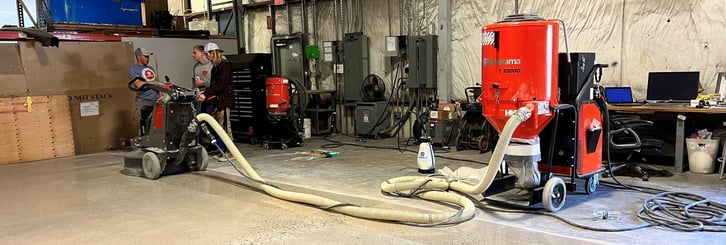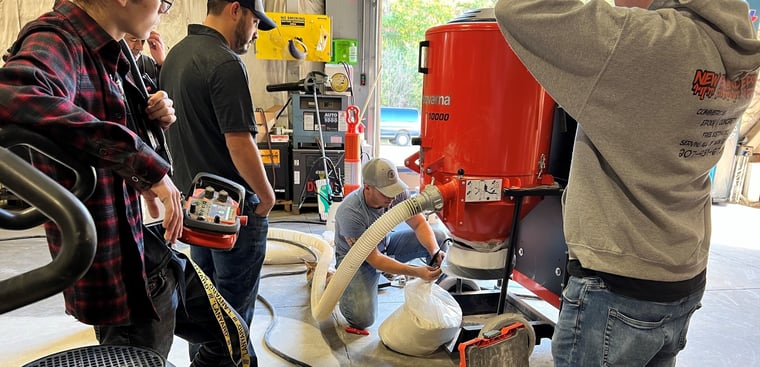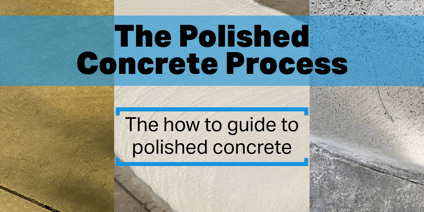When it comes to surface preparation, a dust collector should be part of your fleet. Whether you are using a shot blaster or a floor grinder you will need a dust collector to keep you and those around you safe. In this post, we will break down why you need a dust collector, what makes them unique, and what to look for when buying.

What is a Dust Collector?
A dust collector is a vital piece of Surface Preparation equipment that serves a couple of key purposes.
1. First, is keeping dust out of the air, and out of the contractor's lungs. When a contractor is doing this kind of work every day, safety is of paramount importance.
2. Second, it keeps dust off the floor during the grinding/polishing process. In order for the contractor to properly grind/polish the floor, they need to be able to see the scratch pattern they are creating. A dust collector will keep dust out of the air and off the floor.
How is Dust Collected?
Dust and debris are collected by two methods, a tank or a bag. When using a bag, it is most often a continuous bag system. This method consists of a bag that will be tied at the bottom. You CAN generally fill for as long as you can handle the bag, then cut and start a new one. The tank method can become cumbersome when emptying the tank. Handling a heavy tank, along with keeping it clean and ready to go, can be a hassle.

Filtering to Keep You Safe
Most dust extractors have the ability to capture 99% of airborne dust particulate. This number gives you the reassurance that you are not breathing in dangerous particles. You should always look at what kind of filtering system the machine utilizes, although HEPA filters are often used to give you peace of mind. Depending on the machine you have, you can often install a HEPA filter for safety. A HEPA (high-efficiency particulate air) filter will trap small, harmful particles that a normal filter may possibly miss.
What is CFM?
CFM is short for cubic feet per minute. This refers to how much airflow the dust collector can suck up in a minute. The higher the number, the better the suction. For comparison, a general vacuum will have 50-100 CFM, while a dust collector can have upwards of 1200 CFM. A good CFM will do a better job of protecting you and helps to keep contaminants out of the air and off the floor; the higher the CFM the better chance the machine will keep up with large production jobs.
Power Requirements
Choosing the right equipment with the right power should also be considered. It is often recommended to get a machine that runs on the same voltage as the grinding equipment you will be using to help prevent problems in the field. On some machines, manufacturers offer pass-through power options so your grinder can be run right from the vacuum. With both running on the same voltage, only one cable needs to reach the power supply, saving the contractor, time, effort, and money.
Enjoyed reading this post? Read the following articles:



